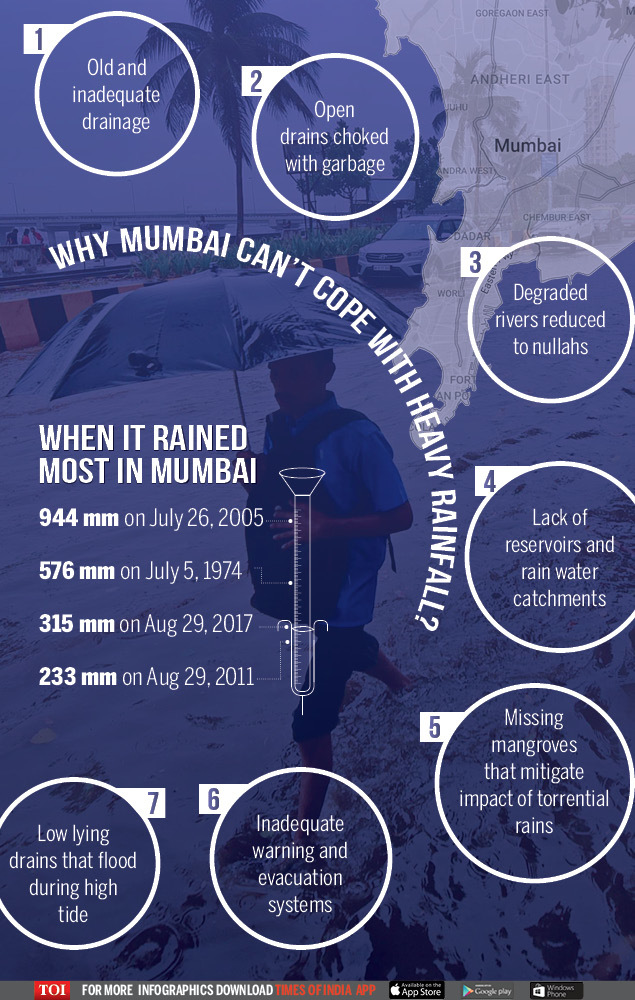Floods in Mumbai
This is a collection of articles archived for the excellence of their content. |
Causes
As in 2018
June 8, 2018: The Times of India
On June 7, 2018, Mumbai received 27.6mm to 37.8mm of rainfall. Certainly not the most, but enough to throw city out of gear with water logging and delayed trains and flights. However, the worst is yet to come. The IMD has forecast heavy rainfall for the city over the weekend. And as per private weather forecaster Skymet, it could be the heaviest since July 26, 2005, when it rained 944mm in just 24 hours, resulting in massive flooding, deaths of over 500 people and losses overs Rs 550 crores.
But heavy rainfall has drowned Mumbai not just once. In fact, the maximum city has experienced monstrous floods twice already in the current decade, in 2011 and 2017. In fact in 2017, insurers had to take a hit of Rs 500 crores in claims.
Being a coastal city, heavy rainfall is a given in Mumbai. Question is why are floods becoming a regular occurrence in the city? One of the biggest reasons is 150-year-old Mumbai’s drainage system. It is designed to handle 2.5 cm (25mm) of rain every hour and that too only if there is no high tide. Two, the desilting and cleaning of drains- an annual exercise by the city’s municipal corporation (BMC) is not carried out properly, despite the fact that BMC is the richest municipal body in Asia with a budget bigger than several states in the country.
Third, the Mithi river, which drains water into Arabian Sea is choking with garbage, silt and sewage, and its floodplains encroached by slums. Though the administration has repeatedly drawn plans to revive the river, they have been abandoned.
Fourth, low-lying areas near deltas and on sinking coasts are crowded with slums making them vulnerable to flooding.
Fifth, heavy rain clubbed with a high tide prevents rain water from flowing into the sea, instead it brings it right back into the city.
Sixth, the depleting mangroves. Mangroves mitigate the impact of torrential rains but cutting them down brings out what is a natural barrier to flooding.
